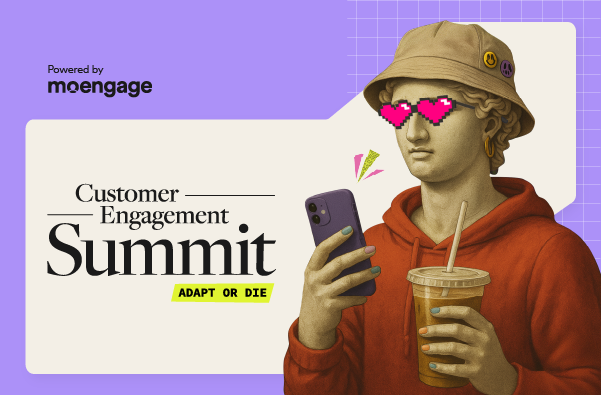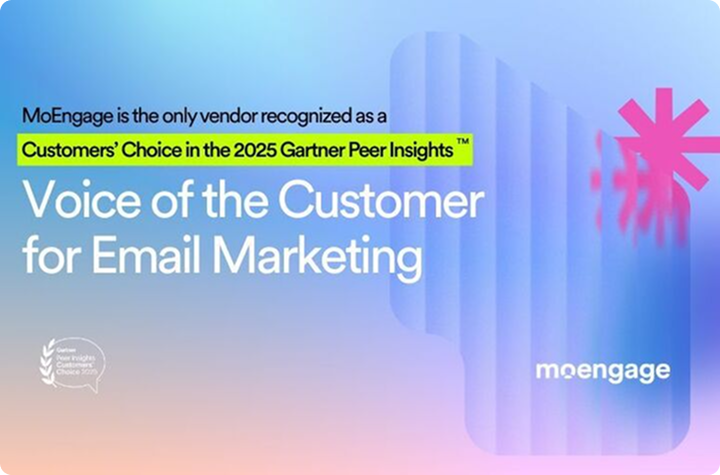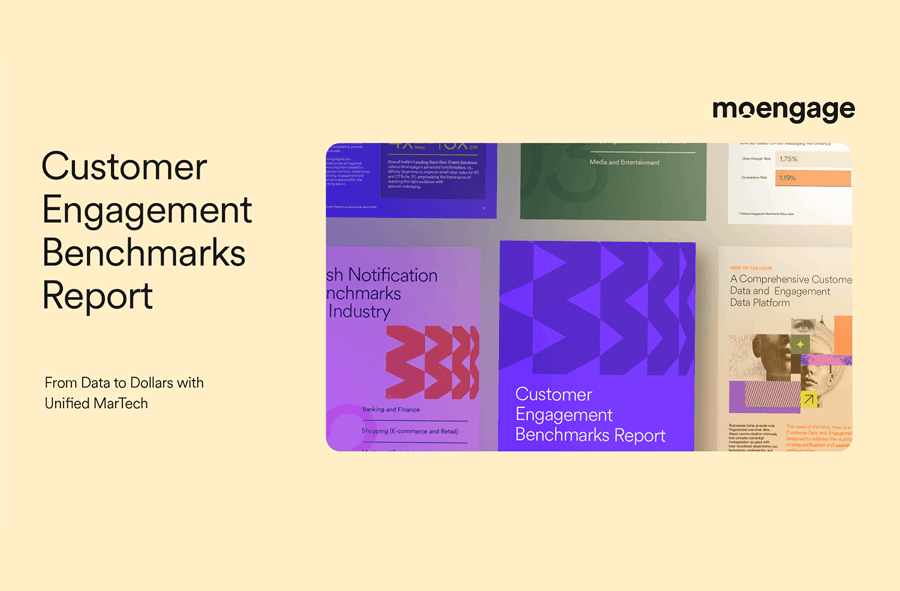How to Choose Between Behavioral & Demographic Segmentation

Reading Time: 5 minutes
| Customer Retention Calculator – Learn how to measure retention the way it makes sense for your app.
Watch Video – Lessons on Growth Marketing – Growth Marketing Lesson: Application of User Segmentation and Automation |
How well do you understand your users?
The market is flooded with channels that help you maximize reach and conversions, but are you tapping the right people? Keeping up with your user base is an important prerequisite in customer retention and it all boils down to behavioral and demographic segmentation.
In a MoEngage webinar, Krishnan VR, performance marketing at Zoomcar, and Yash Reddy, VP of sales at MoEngage shared critical insights about how to choose the right customer segmentation model for a business.
Watch the video here
We have summarized the various points and advice shared during the webinar below.
Demographic v/s Behavioural Segmentation
Behavioral segmentation played a crucial role while launching one of Zoomcars’ most recent business models – Zap Cars, a subscription-based car rental service.
Behavioral segmentation involves deriving variables based on customer behavior with the brand. Every time a customer makes a transaction with a brand, he/she leaves behind a digital trail that can be studied to arrive at a particular variable for the customer. For example, there could be different variables based on behavior-discount seeking customers, long-drive loving customers, seasonal customers, etc.
While demographic segmentation is a more direct and generic form of segmentation with basic variables like gender, age, education, behavioral segmentation, on the other hand, is much more complex and requires collecting transactional data points and creating variables based on this data. Companies that have massive data accessible to them are more capable of using behavioral segmentation than start-ups.
The role of behavioral segmentation is elaborated with the following industry case studies.
Case 1 – Cross-Sell or Upsell Look-Alike Business Models Using Non-Paid Channels
Behavioral variables help shape a business model at no cost, for eg: Zoom started Zap Cars. A subscription model, where users, by paying a monthly subscription, can have a car of their choice without the hassle of securing a loan or paying EMI.
Behavioral Variables Used By Zoom Cars to Cross-Sell Zap
- Frequency
- % of Weekday/Weekend Bookings
- Age
- Discounting Behaviour
These variables helped create a smaller segment or rather a subset of the overall Zoom customer base, which was around 2-3% of the customer base. Zap ran campaigns for them across multiple cities for 30 days.
They achieved a 50% conversion upliftment at no cost!
Case 2 – Improve Customer Retention For Offline Brands By Reducing Discount Outflows
We see the impact of behavioral segmentation on an offline apparel brand. The apparel brand in question here was dependent on seasonal sales and discounts for customer retention. Blanket offers like 3 on 3 sales are not viable for all types of customers.
Behavioral segmentation was used here to give the right customers, the right offers. For this the brand segmented its customer base based on purchasing behavior:
The behavior variables they derived:
- Discount Behaviour
- Average Transaction Size
- Time of Purchase- Season/Non-Season
For eg: A low discount customer with a low transaction size was pitched a 30% Discount on a single product. The campaign was run during the sale period with a selective exposure of these offers and the brands saw a customer retention upliftment by 2X with a 5% lesser discount burn.
Behavioral segmentation boosts conversions and enhances brand presence at low costs
Mistakes Brands Should Avoid in Behavioral Segmentation
1. Creating too many small segments: Micro segments might increase relevance but can be operationally very tedious. It is suggested to limiting the number of segments that are being targeted with an offer or creating a segment within a segment. Most derived variables can be rolled up into a single variable.
2. Using old strategies for a new customer base: Along with the brand’s customer base and behavior, the segmentation model must accommodate these changes. A change in discounting would change the bucket into which customers fall. For eg; A person who used to discounts more than 50% would not be interested in a lower discount pricing.
3. Launching the campaign without a pilot: The advice to brands is to start small. It also gives the brand to project the campaign’s impact better when it’s run on a smaller customer base.
4. Incorrect impact measurement: The pilot must be run for a specific time period which will give the brands enough to measure. A control group (who consist of people who aren’t targeted with any campaigns) will help measure the impact more efficiently.
When it comes to choosing between Demographic and Behavioural Segmentation, it purely depends on the brand objectives.
A new brand would perhaps prefer to begin with basic segmentation based on age or geographical location for which demographic works well. But in the case of growing brands who want to understand customers in detail, behavioral variables come handy.
Understanding Custom Segmentation and Its Importance in Marketing Strategy
After scaling segments, brands will find it difficult and impractical to identify and segment characteristics right from scratch and that’s where custom segments come in handy.
Custom segments are predefined segments or a set of templates that define the characteristics of a particular cohort of users. These allow for future market analysis and interventions.
Custom Segments Help Compare Customer Cohorts, Understand Purchasing Patterns Over Time and Behavior of App Installers
Comparative Analysis of Different Customer Categories
- Geographical Location: How do customers from two different cities respond to the same set of communication.
- Purchasing Behaviour Post Communication: Brands can better understand the customer action that is triggered by communication.
- Devices Used By The Customer: The delivery rates of push notifications depend heavily on device composition. Brands can get a deeper understanding of demographics based on Tier 1, 2, 3 segmentation and can modify communication accordingly.
Correlation (negative or positive) between user categories: For eg: Understanding behavioral trends of segments like the performance of organic users v/s paid users in the overall conversion funnel. Custom segments are also helpful in understanding the impact of offline campaigns. Brands can drag and drop these potential users as a custom segment to marketing automation platforms like MoEngage and track their user behavior-like app installation, transaction journey, etc.
Analyze User Behaviour Over A Period of Time: Analysing week-on-week purchase patterns of customers acquired through paid v/s non-paid channels. Or analyzing the impact on purchasing patterns after notifications or offers.
Understand Purchase Patterns in App Installers: Brands can define custom segments based on monthly retention rates of people. These segments help brands understand the reasons for the dip in conversion or retention rates and why certain categories perform better compared to others. A top-down approach helps in defining custom segments. Brands can begin with a high level of cohort and then branch out to smaller segments.
Custom segments are highly intervention-friendly! Seamless integration of data points churned out by data scientists onto a marketing automation platform like MoEngage allows for market intervention.
For eg: Custom segments who are at the risk of attrition in the next 30 days can be targeted with proactive campaigns using a marketing automation platform. You can then analyze the impact of your interventions and take the necessary decisions.
To know how MoEngage can increase retention using Cohort Analysis Click Here
What Should You Do Next?
- If you wish to take a look at the full webinar series by MoEngage, Click here.
- If you want to schedule a product demo: Get in touch with your details here.
- Enough reading, If you prefer watching videos or listening to podcasts: Take a look at these videos from our Youtube channel. Or Hear our podcasts on SoundCloud.
Here’s What You Should Read Next |















